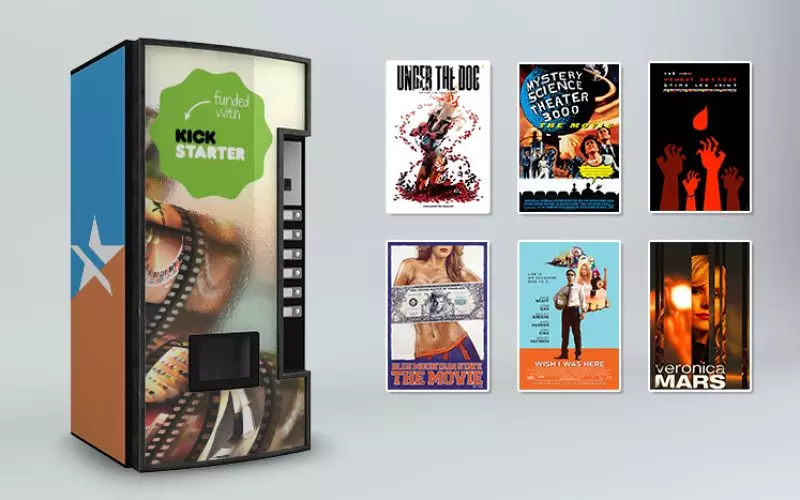Checklist for your Crowdfunding Campaign
Over the past few weeks I've been observing a lot of film projects on Kickstarter and Indiegogo and reading many articles about the best practices of crowdfunding. Let's face it, Kickstarter is most likely the way to go for your films, and below you will be able to find a game plan I've gathered up for you to follow. If you have any comments, notes or objections, feel free to reach out to me and I'd be happy to make the adjustments. So, here we go.
Step 1: Collect everybody's emails
This is extremely important that's why I list it as a first step. Anybody who will be working on the project with you should give you contact information regardless so why not keep one clean list specific to that project so that when you have an update to send out you'll have a list right under your fingertips. Remember to BCC everyone. Yes! BCC - you don't want to upset anyone by broadcasting their information and overloading their inbox with back and forth communication before you even begin the project.
Step 2. Create eye catching media
That includes a cover image, a poster and a video. You want to bring people into the campaign by providing a good resolution art. If you know anyone with even elementary Photoshop skills they should be able to help you out with this. Here's the first time you can use that email list you created in the first step. If you can't find anyone and need something on the cheap, you can try canva.com to create pretty decent cover images and posters for free. If you found someone with Photoshop skills, you may want to try graphicriver.net instead. That will cost around $10 and some of them look really great. Finally if you're willing to spend some money on a design, try 99designs.com or one of the other crowd-sourcing design sites here.
Step 3. Online presence
That includes a website and social media. A lot of people take this step for granted, but your website will be the central hub for your film project. Any information that you will put on Kickstarter should go on your website. Social media connections should be easily identifiable, and once you start your campaign, there should be a clear indication of it. That's right, I'm not a fan of big modal popups myself, but in this case, just go ahead and do it. Web For Actors is by far the easiest way to get your website built, and at $9 per month, you're getting game-changing tools for next to nothing.
Social media accounts should include Twitter, Instagram and Facebook. If you want to use any other ones, that's fine, but I recommend concentrating on these three. Keep in mind that you can't use links in Instagram posts, that's why your one and only link allowed on Instagram should go to your campaign or to your website. As soon as you can, create a nice image describing your project and send it to all your accounts with some helpful hashtags so that people can find it. Again, you may want to use canva.com to create some artwork with your text.
For those of you who have a designer, get them to get you some nice looking banners for your social media pages as well. The more your stuff stands out, the better; graphicriver.net has many different header designs you can pick from that can be very quickly adjusted and customized.
As far as Twitter and Instagram go, you can find a list of tags that would describe your project. For instance, I recently backed a film project that didn't succeed, and it blows my mind, because the topic involved a young African American girl trying to get into a segregated Beatles concert set in 1964 in the south. If you ask me, this film should have been funded 5 times over! So make sure you tag in anyone who might be interested by the project or in one way or another would be affected by hearing about it.
On Instagram you have plenty of text space so use standard tags as well. #filmmaker, #filmmakers, #filmmakerlife, #filmmakerslife, #kickstarter, #indiefilm and so on. Make sure you follow these tags too. Once you do start liking other people's images and comment on them. Give first by liking and resharing other people's tweets and Instagram photos, and they might do the same for you. There are some tools out there you could use to help you out with that as well; robolike.com takes care of both Twitter and Instagram hashtags, while likegrowers.com will let you follow certain people and will like their followers posts. So if you know of any other films that are doing well on Kickstarter, check if they have any social media and connect with their fans as well.
As far as Facebook goes, you could try and build a page for the project, but research shows that it doesn't help much. One thing you should definitely do though, once the campaign is live, start a Facebook Event for your campaign and invite all your friends. Then add everyone whose contact information you collected in the first step, so that they can invite all of their friends as well.
Make sure you concentrate on the social media for about 30 days before you start the campaign. It's important that you get everyone hyped up before you start anything, so that once the project is on Kickstarter, you'll have some supporters already waiting in line to help out.
Step 4: Campaign day #1
Once you have everything in place and spent a month or so collecting fans you're ready to get your campaign started.
- set a reasonable goal - setting a goal too high might dismay others from helping out, but setting the goal too low might make it hard to keep people motivated in collecting more funds; remember, if you fail to reach the goal, you get nothing
- statistically campaigns do better when they're shorter than 30 days
- try to plan for it to end on a Wednesday or a Saturday, never on a Sunday
- your video should be no longer than 3 minutes, but keep it entertaining; you're a filmmaker, so you have an advantage over those who know nothing about film, make something good and edit the hell out of it until it's perfect
- make sure to describe what you're planning to do once the goal is reached, be clear about it
- be personal, be honest, be authentic and sincere
- speak of the film, but focus on the story of you trying to make this film
- offer multiple rewards - 7 is a minimum, but remember, the more rewards you offer, the better the odds of success, start with $1 or $5, the lower you start the higher chance of complete strangers chipping in
- make sure you do the math as far as rewards go, sometimes shipping can put you back in a hole, do research on stamps and envelope sizes
Step 5: Start with your close friends and family
Reach out to everyone you know and ask to contribute. Day one is the "friends and family" day. Remember the mailing list from the first step? Use it! Email everyone on that list and ask them to do the same. Strangers will be less likely to contribute to a campaign that is 0% funded. A good goal would be to get at least 10% in at this time. Once you've reached out to everyone, create a new tier that goes a step further and reach out to more distant cousins, colleagues and coworkers.
Step 6: Updates, feedback, etc.
This might be common sense, but it doesn't hurt to put it down on paper (screen?). When someone donates to your project, THANK THEM. They might have a Facebook page or Twitter page linked up to their account, in which case, thank them on social media, so that people who follow your backers will know that they made a contribution. And when you do say "thanks", make sure you add a link back to the campaign. Even if they don't have a social media, thank them via Kickstarter messages, it always feels nice to be appreciated.
Keep writing updates. Let people know where you stand, how many days are left, how much backing you've received. If you keep it funny, you might draw even more attention to yourself. If you run out of ideas, get some animated gifs from giphy.com and add some funny subtitles. Then post and repost on all of your social media. Then again, it all depends on the type of a project. If it's of a serious matter you may want to avoid humor.
In summary...
I hope that these hints were helpful. If you're planning to run a campaign in the future, bookmark this page. I will be updating it each time I receive some valuable input or find another useful tip anywhere online. Furthermore, do know that as we develop our filmmakers suite here at IADB we will be focusing on the following items:
- "thank you" scroller - instant perk that allows you to list your supporters name on your website
- tool for short URL generation - there are few good ones out there, but ours will collect statistics right into your account
- tool for showcasing your campaign - either showing a large modal popup or putting your website on pause and redirecting domain
- countdown timers - and fun charts showing the process of your campaigns
- email list export tool - to deal with managing and contacting everybody involved in your project


